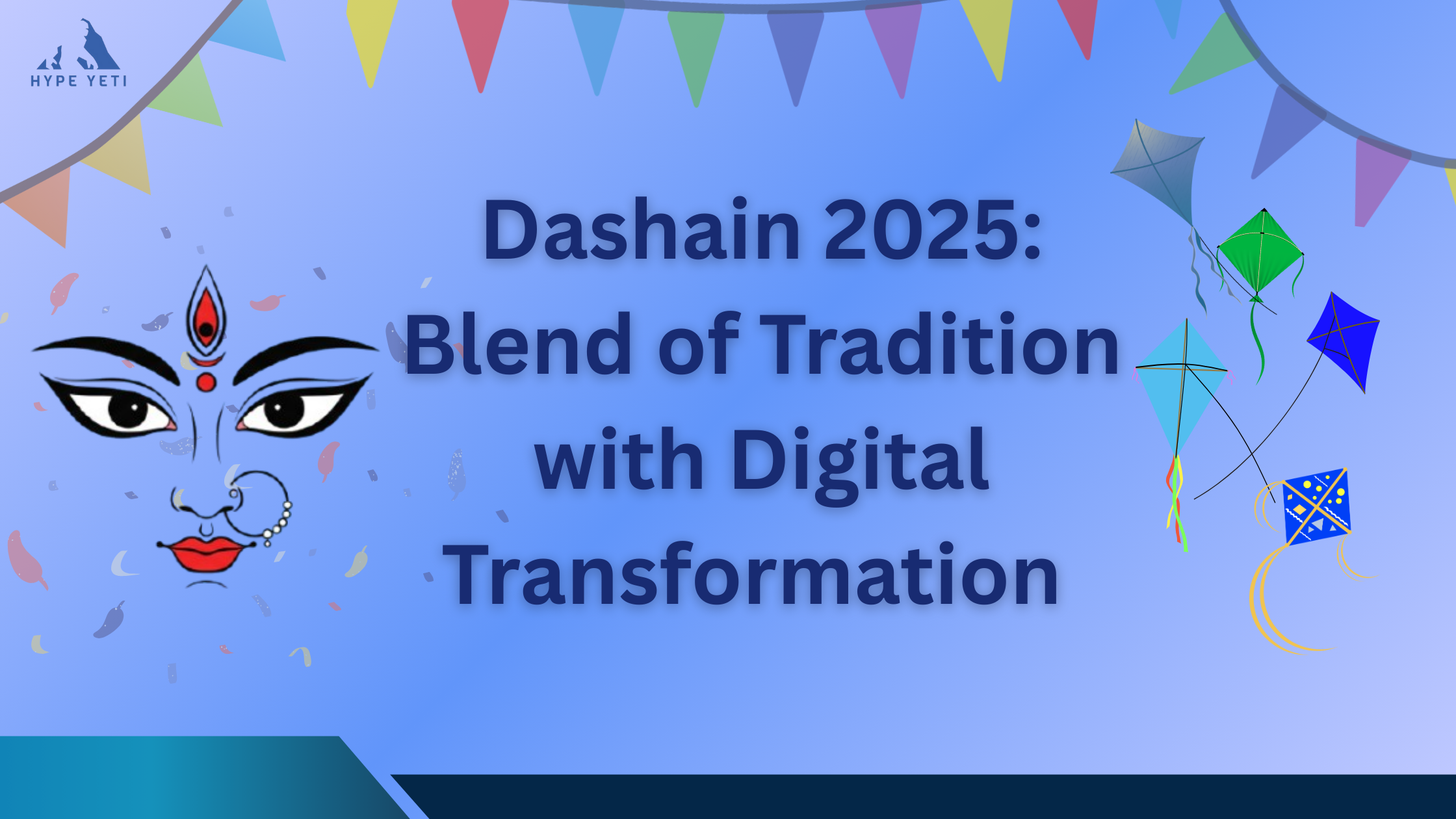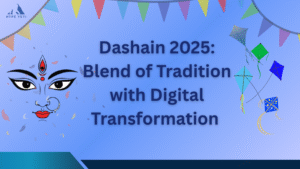“Dashain is not just a festival; it’s a celebration of unity, love, and blessings across generations.” -Nepali Proverb
Dashain, the biggest and most loved festival, is celebrated by more than 85% of people across the country. It unites people from all backgrounds and places, regardless of any caste, religion, or geographic location. Dashain 2025 is once again a much-awaited time for all Nepali people living in any part of the world.
Being the longest and most significant Hindu festival of Nepal, Dashain goes beyond just religion and represents national pride. By 2025, this much-loved festival had evolved into Nepal’s biggest economic event, creating more than NPR 20,000 lakh a year, which is equivalent to 12% of Nepal’s GDP in just 15 days of celebration. While the event is rooted in ancient traditions, it equally balances between cultural values and modern business.
As 35 lakh Nepalis prepare for their once-a-year homecoming journey, creating the largest human migration within Nepal’s annual schedule, digital development is changing the way of the ancient festival celebration. From virtual tika ceremonies to online dakshina transactions, advanced technology is enhancing festival methodologies, but it never compromises their religious significance.
What is Dashain? The Mythological and Ramayana Story
Mythological Belief
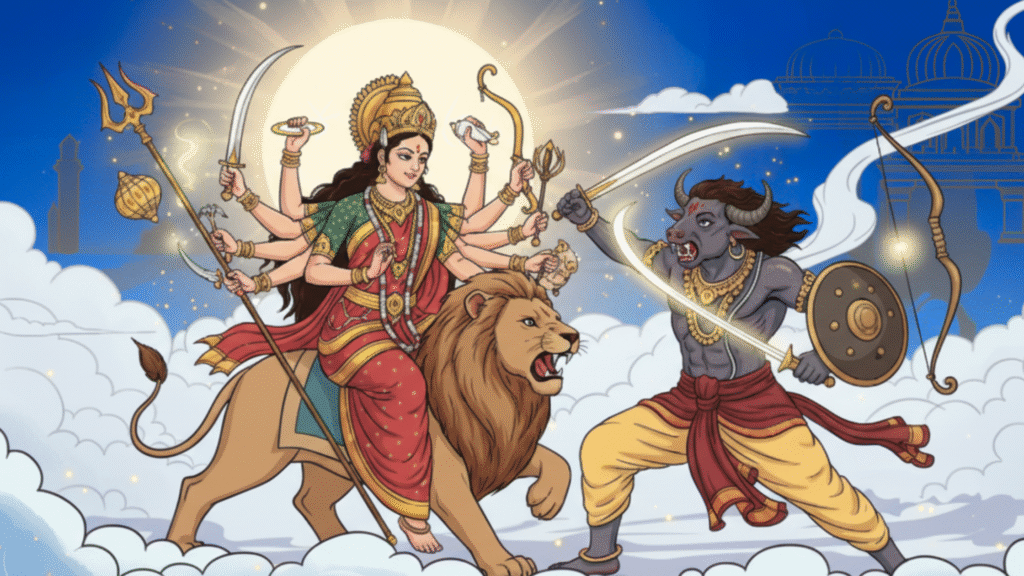
According to Hinduism, there was a demon called Mahishasura, who was so powerful that no man or god could defeat him in any battle. Due to the vanity, he started to show his strength and spread his fear everywhere. His actions caused many casualties, so the gods came together and formed Goddess Durga with powerful weapons and strength. After that, the battle began, and for nine days, she fought bravely against Mahishasura. Finally, on the tenth day, she defeated Mahishasura, marking the victory of good over evil.
Ramayana Belief
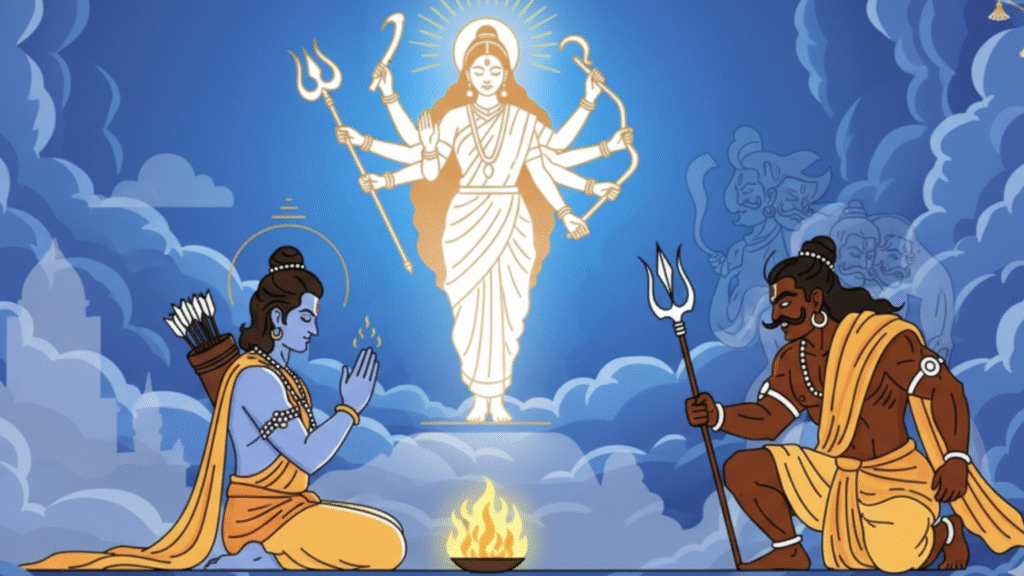
In the Ramayana, when Ravana abducted Sita, Lord Rama continuously worshipped Goddess Durga for nine days to gain strength for the battle. On the tenth day, with her blessings, Rama defeated Ravana. He saved Sita as well as his entire nation by bringing back peace and justice.
Both of the theologies remind us that no matter how strong evil seems to be, how much strength and power it has, in the end, goodness always rises above bad. This powerful message has stood the test of time, transforming Dashain into a festival of divine victory, but it also depicts that righteousness will always triumph over darkness and wrong.
Duration of Dashain
Dashain is a 15-day-long festival. The fifteen-day festival starts with Ghatasthapana and ends with Kojagrat Purnima. Every day brings unique traditions and spiritual meaning. It begins with planting holy Jamara seeds and wraps up with honoring Goddess Lakshmi. These laid-out days build excitement and devotion, leading to Vijaya Dashami. The festival also brings a special time to reflect, feel thankful, and connect, leaving behind the material focus of everyday life.
“Festivals are timeless teachers; they remind us that traditions are the strongest brands of all.”
Dashain 2025: The Major Dates
The first day – Ghatasthapana [Ashoj 6, 2082]
Ghatasthapana is the very first day of the Dashain festival. The word “Ghatasthapana” is formed by the combination of two words: “Ghata” (pot) and “Sthapana” (to establish). People place these pots in the darkest spot in their homes. Over the next ten days, the sprouts grow into golden grass.
But with a twist; families nowadays take pictures and videos of this sacred planting via Instagram Stories so they can share with family members across the globe. Online shops reveal orders for wheat and barley seedlings peak by 400% in the weeks before Ghatasthapana. Some mobile applications even help to determine the most propitious date to plant based on location and the moon calendar.
The seventh day – Phulpati [Ashoj 13, 2082]
On the seventh day of Dashain, Phulpati is celebrated, which has deep religious and cultural significance. On this very day, banana stalks, sugarcane, jamara and other holy offerings are transported to Kathmandu from the ancient Gorkha Palace, signifying blessings, wealth, and national unity.
Today, Phulpati is not limited to our country’s boundary. With the rapid development of digital technologies, families can join the celebration through various social media platforms. They can easily take photos, videos, and exchange blessings on video calls by keeping the spirit of the festival alive despite being miles apart.
The eight – day Maha Ashtami [Ashoj 14, 2082]
Maha Astham is the eighth day of Dashain. Kali Mata and Goddess Durga Bhawani are worshiped during this day, who stand for courage, power, and the destruction of evil. Temples buzz with devotees offering prayers and traditional sacrifices.
But nowadays, technologies have changed the old way of tradition. Large temples held live-stream ceremonies so that devotees could watch from a distance. Temple donations are taken through digital modes of payment, and temple visit bookings are managed through mobile applications to ease crowd blockages while still providing spiritual accessibility.
The ninth day – Navami [Ashoj 15, 2082]
Maha Navami is the final day of worship dedicated to Goddess Durga, who represents the victory of the Goddess Durga over the demon. It is a day when automobiles to kitchen knives are blessed with divine energy for easy and secure usage.
Today, most people share their photos with decorated vehicles and blessed workspaces all over social media to show their family, friends, and relatives. They even save these memories in digital albums so that future generations can also feel connected to the festival.
The tenth day – Bijaya Dashami [Ashoj 16, 2082]
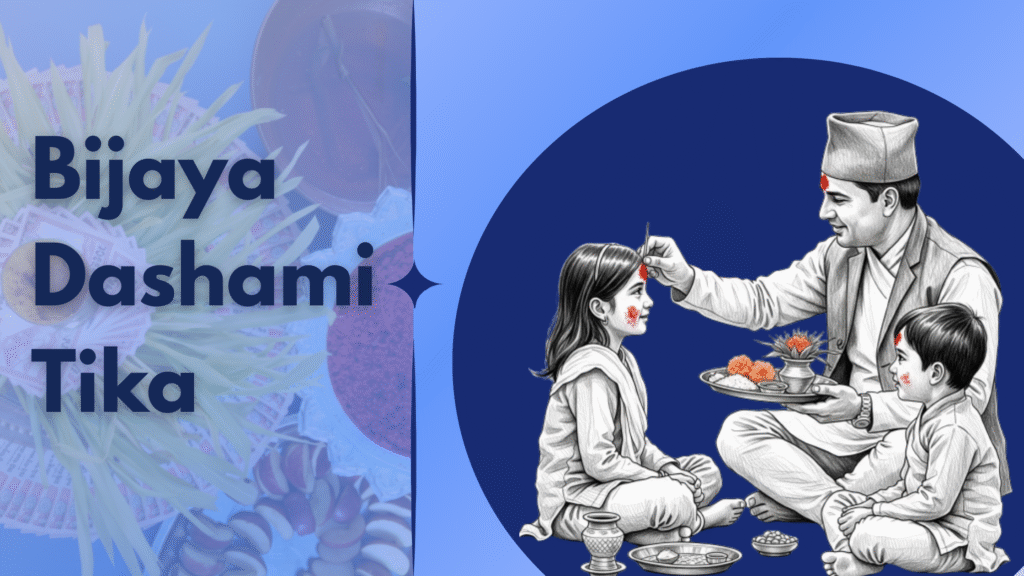
Vijayadashami (Vijaya = victory + Dashami) is the most awaited and auspicious day of the festival. This is when the essence of the festival shines. Families come together as elders put tika made from rice, yogurt, and vermillion on the foreheads of younger family members and tuck jamara behind their ears. Blessings are shared, along with dakshina in the form of money, which represents hopes for wealth and well-being.
In 2025, the traditional way of celebrating “tika” has changed compared to the past. People now take part in virtual tika ceremonies where grandparents in rural areas bless grandkids studying abroad using video calls. Transaction volumes rise 400% for digital payment apps as “Dakshina” turns digital. Also, social media is filled with #DashainBlessings and #TikaTime hashtags showing the celebration of the festival worldwide.
“Tika and Jamara are not just blessings; they are bonds of love that keep families rooted.” — Nepali Proverb
Some Digital Revolution Facts During Dashain 2025:
- E-commerce growth: E-commerce portals record 300% sales peaks in the Dashain season.
- Mobile payments: 400% increase in transactions for dakshina transfers
- Activity on social media: Worldwide festival activity surges by 250%.
- Video calling peak: Global calls increase 180% for tika ceremonies
- Online shopping: 67% of festival requirements today are ordered via internet-based programs.
- E-card greetings: E-card blessings complement face-to-face visits by 150%.
- Live streaming: Temple events and cultural events reach 300% more people online.
Warm message from Hypeyeti Marketing for Dashain 2025
The Dashain festival captures perfectly how culture changes but never loses its essence. Nothing is different about its ancient origin: tika ceremonies still carry the same sacred significance, family gatherings still bring the same warmth, flying kites connect heaven with earth, and pre-festival preparations still bring family members together into kitchens with laughter and excitement. What has only changed is the accessibility and reach.
Note: Nepal’s Committee to Determine the Calendar has declared the best time to receive tika this year at 09:38 a.m. on October 2nd.
As Nepal embraces the digital way to celebrate the biggest festival, Hypeyeti Marketing helps to connect businesses with their traditional and modern audiences by creating campaigns and stories that match as well as honor the culture while using the latest trendy technologies.
The festive season is one of the ideal times to maximize your brand. For Dashain 2025, let the experts of Hypeyeti craft a smart, creative, and emotional marketing campaign that truly connects your business with the target audience. Contact us today for a free consultation!
FAQs
Q: When is Dashain in 2025?
In 2025, Dashain begins at Ashoj 6, 2082 (Sep 22, 2025). And the Tika Day (Vijayadashami) is on Ashoj 16 (Oct 2).
Q: Why do people put tika and jamara, especially in Dashain?
The “tika” signifies divine protection and blessing, and “Jamara” symbolizes growth and prosperity. Wearing them together depicts that they can bring good energy as well as fortune when offered by the elders of the family to the younger.
Q: What can be the best marketing strategy applied for Dashain?
Dashain holds tradition as always; stay close towards the roots, prioritize family values, show real stories, respect culture, and align them with the digital campaign.
Q: What is a good symbol and color that can be used for marketing during Dashain?
When it comes to color, the red and gold color signifies the real essence of the festival; include it with Goddess Durga, tika, jamara, and kites by maintaining the traditional design pattern.
Q: How long is Dashain celebrated?
Dashain is a 15-day-long festival, but the main celebration day is VijayaDashami (Oct 2, 2025), which is the day when people wear tika and jamara.

